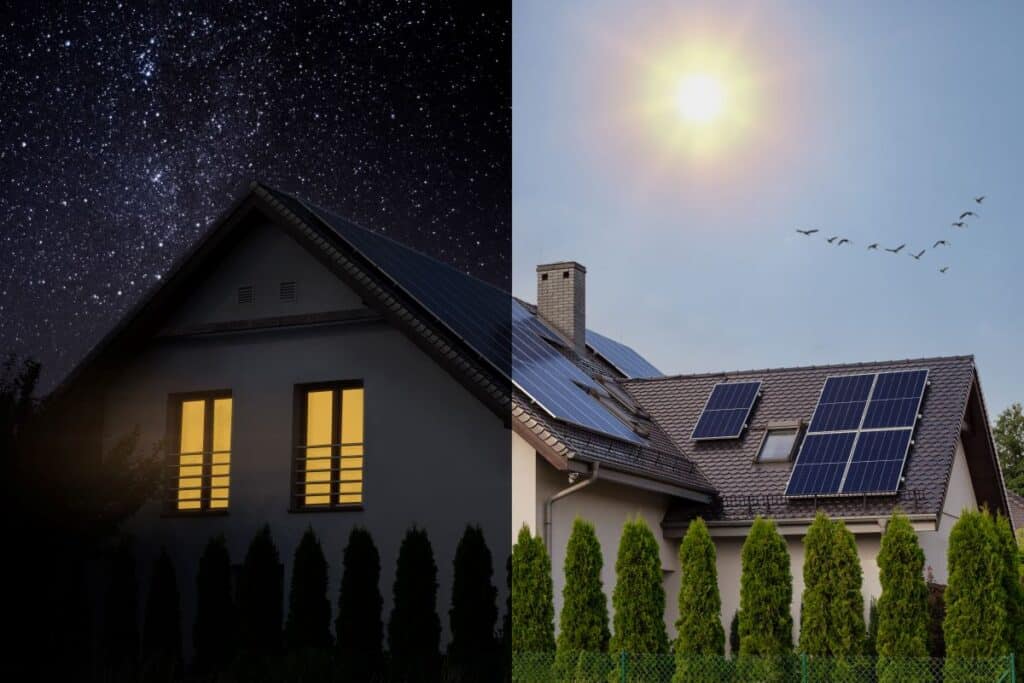Have you been considering using solar panels to save on electricity bills and have a more eco-friendly energy source for your home? In recent years, solar energy has become very popular as more and more homeowners start to use it. But you might be wondering, do solar panels still work at nighttime?
Technically, solar panels don’t work at night as they require sunlight to generate electricity. However, if enough electricity is stored during daytime, you can use that stored energy to power your appliances at home through the night.
In this post, we’ll explore whether solar panels work at night and discuss alternative energy solutions for nighttime power needs.
Quick Navigation
- How Solar Panels Work
- Solar Panels and Nighttime
- Alternative Energy Solutions for Nighttime
- Final Thoughts
How Solar Panels Work
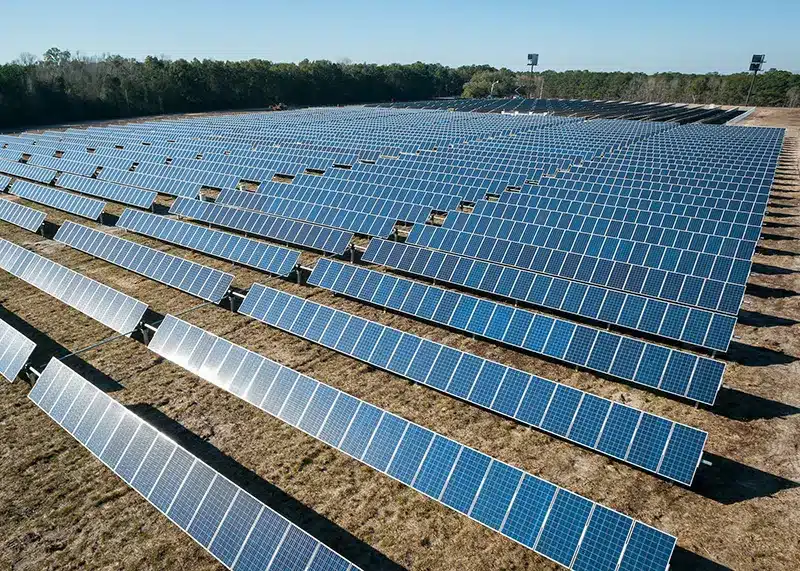
Solar panels use the power of the sun to provide electricity for your home.
Understanding the science behind solar panels and what affects their performance can help you truly optimize this renewable energy source before you decide to replace existing energy infrastructure at home.
The Photovoltaic Effect
Solar panels work because of the photovoltaic effect. It is a process that involves converting sunlight into electricity.
This principle, first discovered by French physicist Edmond Becquerel in 1839, serves as the bedrock for today’s solar panel technology.
When sunlight hits the solar cells in a panel, it dislodges electrons, which then flow through a circuit, creating electrical energy.
Converting Sunlight into Electricity
Solar cells and semiconductor materials
The heart of solar panels consists of solar cells, sometimes called photovoltaic cells, which are made from materials like silicon that can conduct electricity.
These nifty materials have the ability to snatch up sunlight energy and turn it into electricity that you can use to power your home.
Usually, solar cells are set up in a grid pattern on the panel, making sure they get the most sunlight exposure possible.
Types of solar panels
There’s a whole range of commercial solar panels out there to choose from, like monocrystalline, polycrystalline, and even thin-film ones.
There are many solar providers and each type has its advantages and drawbacks, such as differences in efficiency, cost, and appearance.
For future solar customers, it’s crucial to research and compare these options to determine the best solar panels and solar company fit for your specific needs.
Solar installations require money, time, and effort; so make sure to do your due diligence before buying one.
Factors Affecting Solar Panel Efficiency
1. Angle of the sun and panel positioning
The angle at which sunlight strikes your solar panels can significantly impact their efficiency. For the best results, you should position your solar panels, so they’re facing the sun directly, capturing as much sunlight as possible.
The ideal angle for your solar panels can vary based on where you live and the season of the year.
2. Cloud cover and weather conditions
Cloud cover and other weather conditions can also influence solar panel performance. Although solar panels can still generate electricity on cloudy days, their normal power output is typically lower compared to clear, sunny days.
It’s essential to consider the average weather conditions in your area when calculating the potential producing energy of your solar panel system.
3. Temperature and solar panel performance
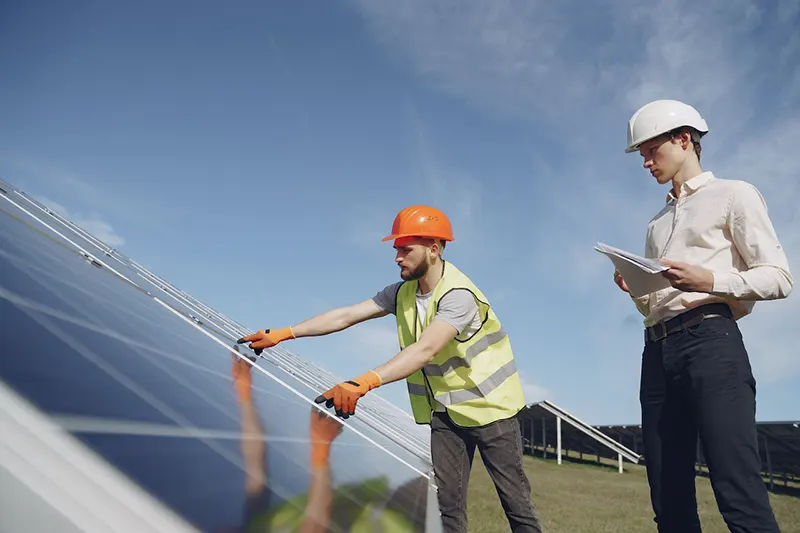
Solar panel system efficiency can be affected by temperature as well. High temperatures can cause solar panels to become less efficient, thereby giving less energy output.
Some solar panels are designed with temperature coefficients, which indicate how much their efficiency decreases as the temperature rises.
4. Cleanliness and panel maintenance
Dirt, dust, and debris on the surface of your solar panels can obstruct sunlight, reducing their efficiency. Regular maintenance and cleaning are necessary to ensure optimal performance.
Be sure to follow the manufacturer’s advice on cleaning and taking care of your solar panels so they keep running smoothly.
Solar Panels and Nighttime
Solar panels do a great job of providing green energy during the day, but they’re not as effective when it comes to nighttime.
In this section, we’ll explore the challenges of nighttime power generation and discuss alternative solutions for maintaining a consistent energy supply.
Lack of Sunlight During the Night
Solar panels need sunlight to make electricity, so once the sun goes down, they just can’t create any more power.
This limitation raises the question of how solar-powered homes can maintain their energy needs during nighttime hours.
Understanding the daily cycle of solar energy production is essential to effectively utilize solar panels as an energy source.
Limitations of Solar Panels at Night
Solar panels are designed to generate electricity from sunlight, which makes them incredibly efficient during daylight hours.
However, they face some limitations during nighttime that need to be addressed to maintain a reliable and eco-friendly energy solution for homes and businesses.
Here, we delve into the limitations of solar panels at night and how these challenges can be managed.
1. Lack of Sunlight
The most apparent limitation of solar panels at night is the absence of sunlight. Without direct sunlight, solar panels cannot produce electricity, and this makes them unable to provide electricity during nighttime hours.
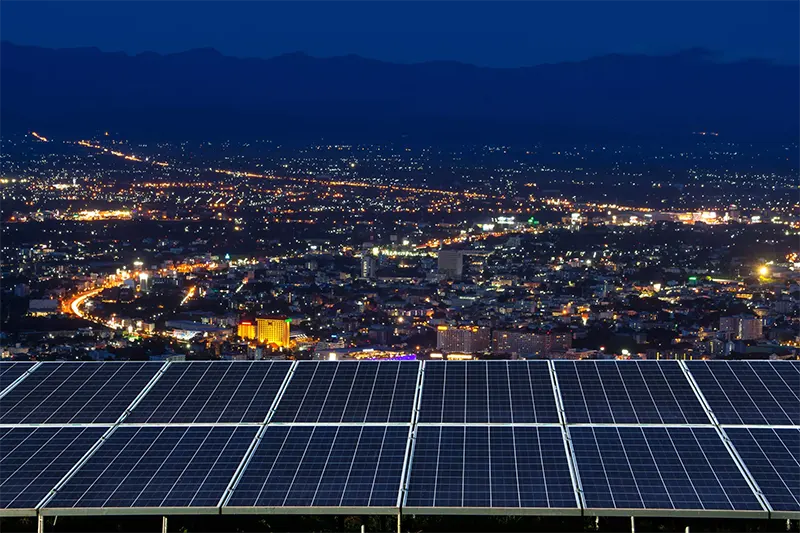
This limitation necessitates alternative energy solutions or solar energy storage systems to maintain consistent energy availability throughout the day and night.
2. Reduced Efficiency in Low Light Conditions
Even in the daytime, solar panels might not work as efficiently when it’s cloudy or overcast outside.
This drop in efficiency becomes even more noticeable during twilight hours, when the sun is close to the horizon and the sunlight hitting the panels is considerably less.
In these conditions, solar panels may produce a fraction of their peak output, making it essential to have backup energy sources or storage solutions in place.
3. Energy Storage and Distribution Challenges
Solar panels usually generate extra electricity during the day than what you can immediately use. This excess electricity must be stored or distributed to maintain a consistent power supply during the night.
Traditional energy storage systems, such as solar batteries, can be expensive and may require regular maintenance.
Additionally, grid-tied systems often rely on utility companies to manage energy distribution, which may not be as efficient or cost-effective as desired.
Alternative Energy Solutions for Nighttime
For solar-powered homes to maintain consistent energy during nighttime hours, it’s essential to explore alternative energy solutions that can complement solar panel systems in producing electricity. Here are some options to consider:
Solar Energy Systems
Battery storage systems
Solar system owners can use solar battery storage systems to store energy generated during the day. This saved energy can then be utilized during nighttime or when sunlight is scarce.
Grid-tied systems
Another option is a grid-tied solar system, where your solar panels are connected to the utility grid.
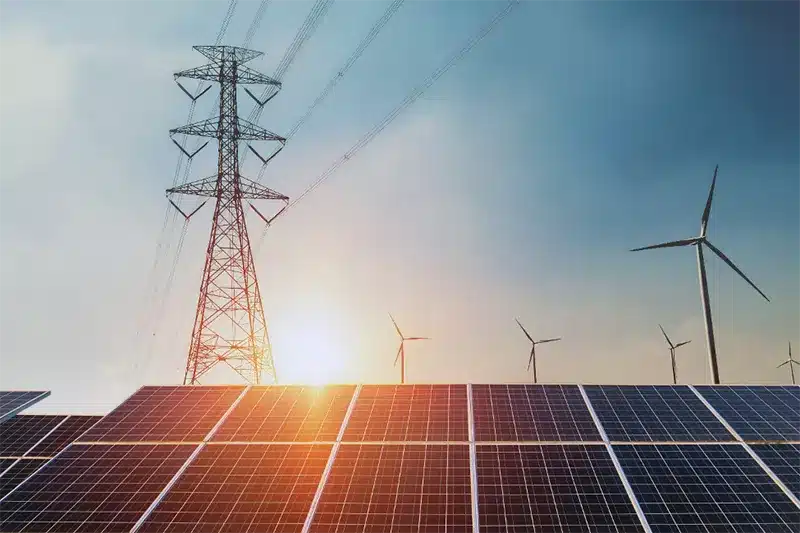
When your panels produce excess energy, it’s sent back to the grid, and you receive credit for it. This credit can be used to offset the cost of grid-supplied electricity during nighttime hours.
Hybrid Systems
Wind energy can supplement solar power by supplying electricity at night or on overcast days when solar panels aren’t as efficient.
Solar-wind hybrid systems
Solar-wind hybrid systems combine the power of solar panels and wind turbines to produce electricity.
Wind power can complement solar energy by providing power during the night or on cloudy days when solar panels are less effective.
Solar-thermal hybrid systems
Solar-thermal hybrid systems make use of solar collectors to capture the sun’s heat during the daytime, which can be stored and used to heat water or generate electricity at night.
Innovative Technologies for Nighttime Solar Energy Generation
Researchers are constantly exploring new ways to generate solar power at night. Here are a couple of promising technologies:
Thermoradiative cells
Innovative thermoradiative cells are designed to harness the Earth’s infrared radiation during nighttime, transforming it into electrical power.
Even though this technology is currently in the development phase, it shows potential for producing solar energy during nighttime hours in the future.
Luminescent solar concentrators
These devices use luminescent materials to absorb sunlight during the day and then release it as a focused beam of light at night.
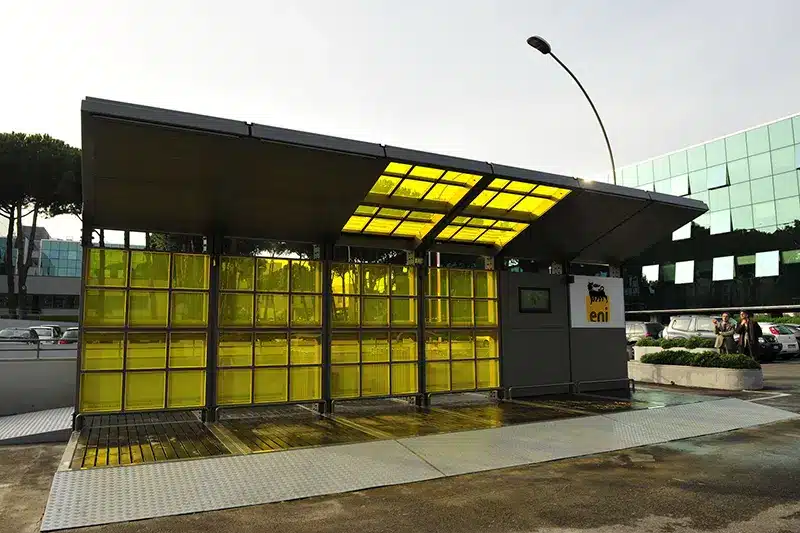
While not yet commercially viable, luminescent solar concentrators have the potential to extend the usable hours of solar panels beyond daylight hours.
Final Thoughts
Solar panels might not generate electricity at night, but there are a bunch of other options to keep your home powered with solar energy even after the sun goes down.
By using solar battery storage systems, grid-tied systems, or hybrid systems, you can store solar energy generated during the day and use it when it’s dark outside – which is a great way to save on your electric bills.

